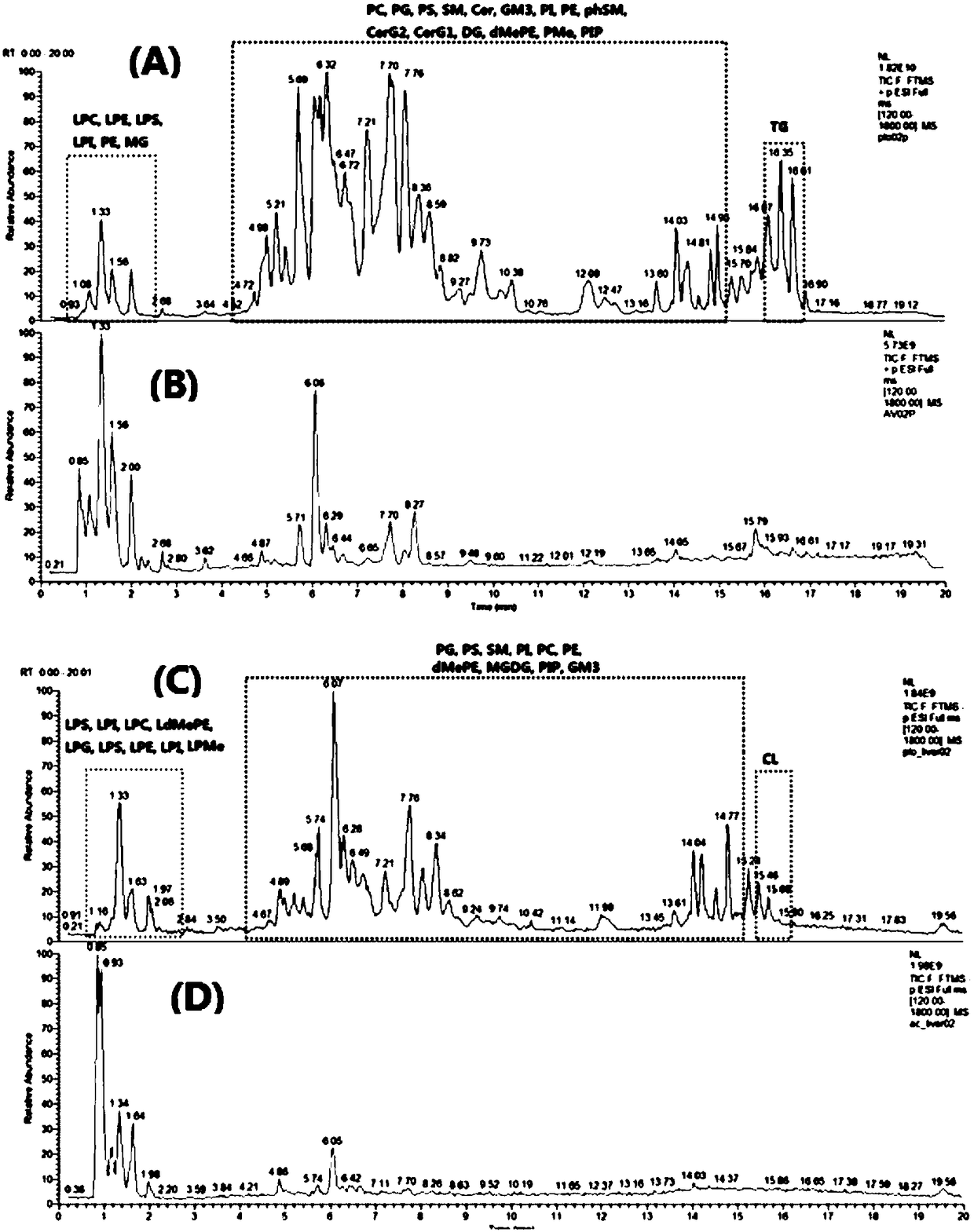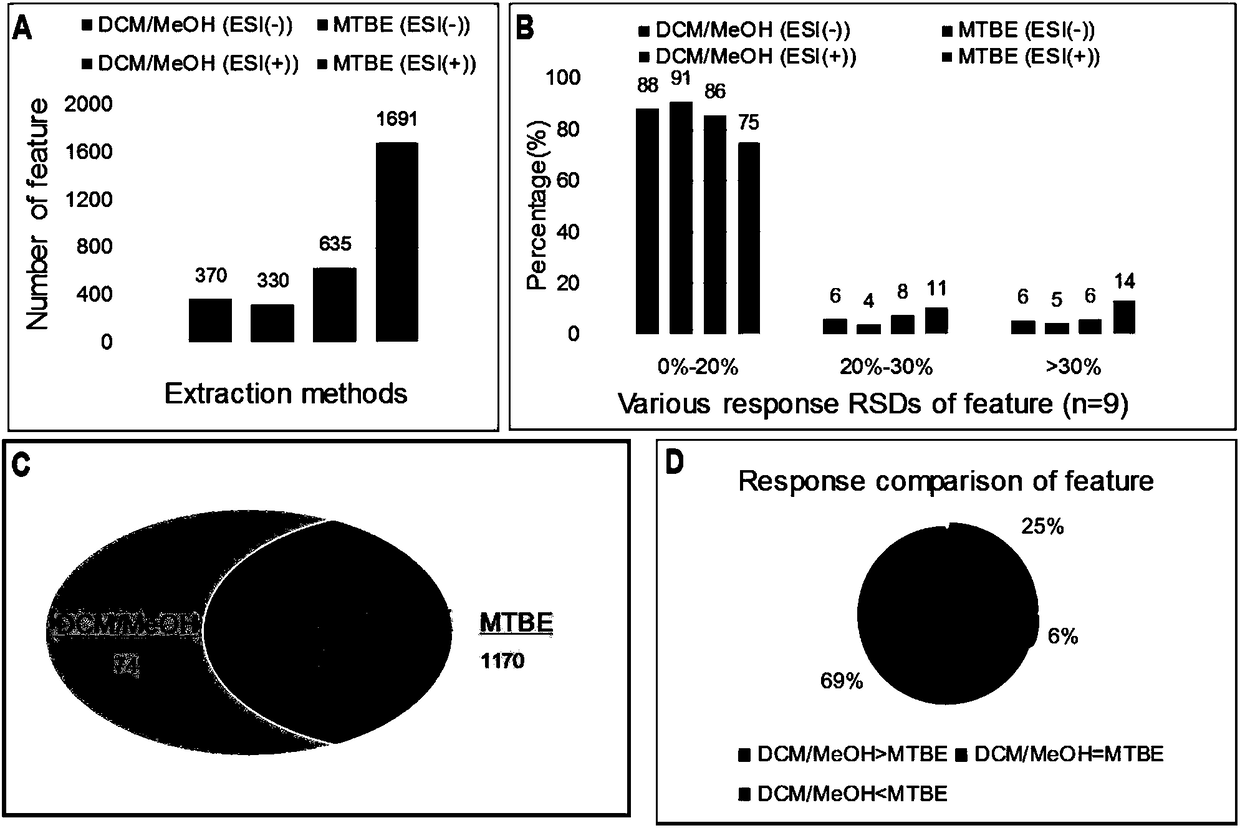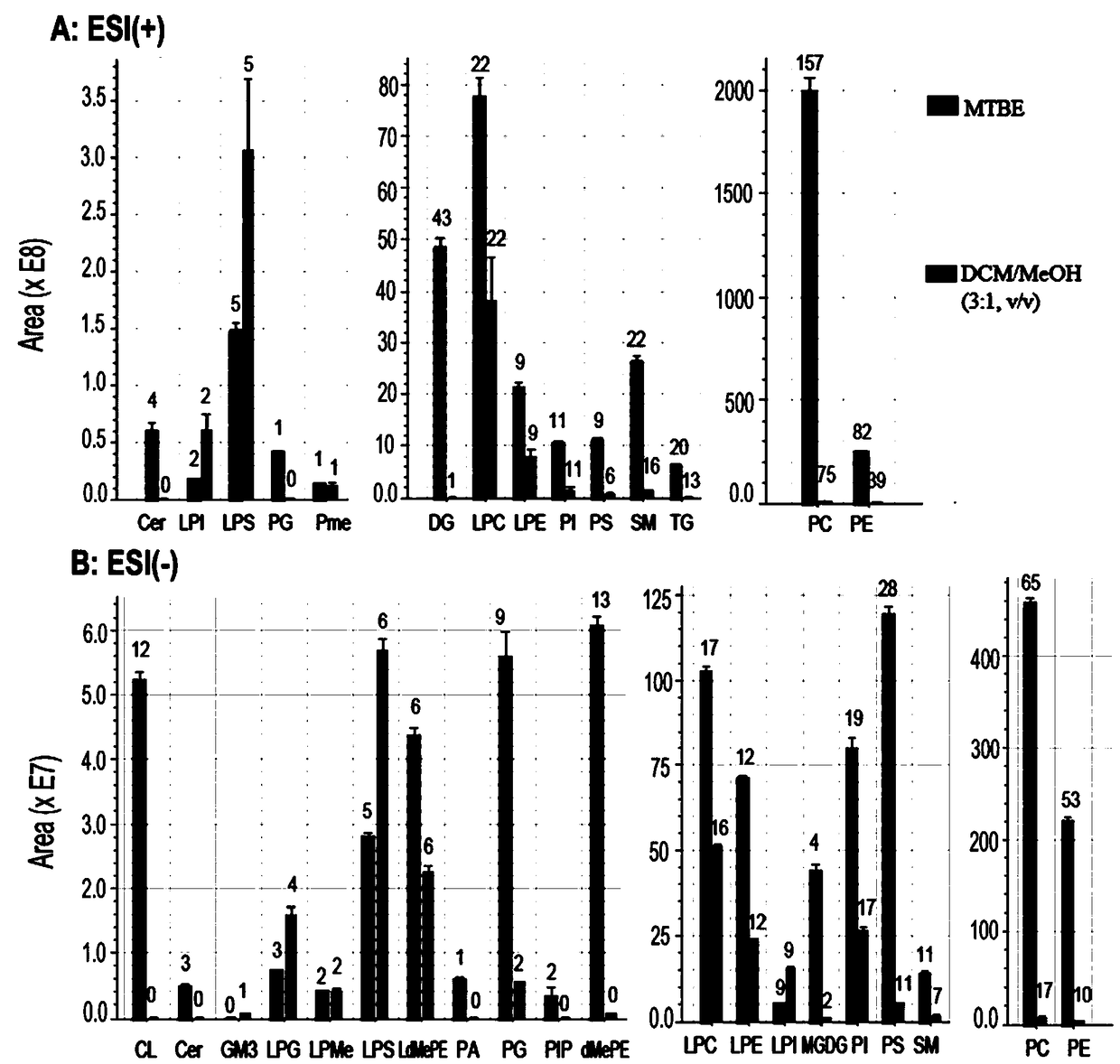Sample extraction method for research on tissue sample metabolomics and lipidomics
A technology of tissue samples and metabolomics, applied in the field of analytical chemistry, can solve the problem of small consumption of samples, achieve the effect of reducing the degradation loss of metabolites, ensuring stability and high extraction efficiency
- Summary
- Abstract
- Description
- Claims
- Application Information
AI Technical Summary
Problems solved by technology
Method used
Image
Examples
Embodiment 1
[0030] Example 1 Rat Dried Sample Hydrophilic and Lipophilic Sample Extraction and Analysis
[0031] A) A normal rat liver was used, and 18 samples were weighed in a stoppered centrifuge tube, each sample 200-300mg.
[0032] B) According to the solvent ratio of 100 μL per 28 mg tissue sample, add an appropriate volume of hydrophilic metabolite extraction solution frozen MeOH-water (1 / 1, v / v), and then add MeOH and MTBE respectively to the centrifuge tube The cleaned steel balls were sealed and placed on dry ice for 30 s, and immediately placed in a fully automatic sample rapid grinder to grind twice, with a grinding frequency of 60 Hz and a grinding time of 20 s.
[0033] C) After grinding, immediately take out the sample and centrifuge at 13,000rpm at low temperature (4°C) for 20min. Concentrated in a centrifugal rotary evaporator (operating temperature: 45° C., vacuum: 0.1 psi, rotation speed: 3000 rpm) to dryness, as the hydrophilic fraction extract.
[0034] D) After tak...
Embodiment 2
[0040] Embodiment 2 different extraction method effect contrasts
[0041] There have been a large number of research reports on the extraction of the hydrophilic part of MeOH-H2O, and the data of the present invention are basically consistent with these reports. The present invention is mainly aimed at continuing to extract the lipid portion of the remaining tissue residue after the hydrophilic portion is extracted, and the relevant verification data is mainly in the aspect of lipid extraction. In order to highlight the advantages of the present invention, after the hydrophilic portion is extracted, MTBE (the present invention method) and literature report method-DCM-MeOH (3:1, v / v) (abbreviation DCM-MeOH method) carry out synchronous analysis, to evaluate the superiority of the present invention (see the attached document for details Figure 1-3 ).
[0042] (1) Comparison of data profile analysis of two lipidomics extraction methods in rat liver, such as figure 1 shown. Th...
PUM
 Login to View More
Login to View More Abstract
Description
Claims
Application Information
 Login to View More
Login to View More - R&D
- Intellectual Property
- Life Sciences
- Materials
- Tech Scout
- Unparalleled Data Quality
- Higher Quality Content
- 60% Fewer Hallucinations
Browse by: Latest US Patents, China's latest patents, Technical Efficacy Thesaurus, Application Domain, Technology Topic, Popular Technical Reports.
© 2025 PatSnap. All rights reserved.Legal|Privacy policy|Modern Slavery Act Transparency Statement|Sitemap|About US| Contact US: help@patsnap.com



